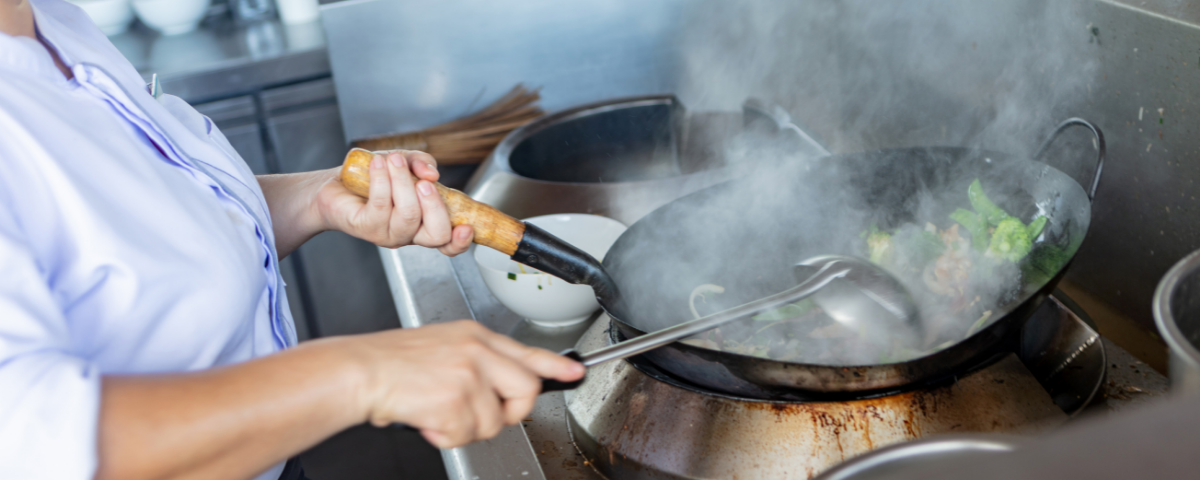Learning About Stir Frying with These 8 tips!
Stir frying is one of the best ways to cook your food, which makes it a great way to use up vegetables and meat when they aren’t quite as fresh as you would like them to be. It is a type of Chinse cooking method that involves cooking chickpeas, onions, garlic, and other vegetables in a wok. The vegetables are stir-fried in cooking oil until the desired crispness is reached.
Stir frying is a quick-cooking method as it takes only a few minutes to cook. It is healthier than deep-frying as it uses less oil and is less likely to splatter the dish into one’s face.
Do you know the perfect way to stir fry? If not, you can learn more about the process here:
Stir Frying to Perfection
Master the art of stir-frying by following these tips:
- Use a high-quality wok only. You should use a wok that is made of high-quality enamel-coated cast iron because this material is suitable for use in a very high-temperature environment.
- Your wok should be hot. When you’re cooking food in a wok, the heat has to circulate all around the perimeter of the pan in order to keep the food from sticking to the bottom. That’s because the heat travels to the outer edge of the pan, where it’s hotter, and then it radiates inward, which is why that part of the pan is often referred to as the “hot zone.”
- Prepare ingredients first before you heat your cast iron pan or wok. Before you turn on the heat and begin stir-frying, you should prepare all of your ingredients, including the oil, water, and seasonings, before you start. This will ensure your ingredients are evenly cooked and will prevent your stir-frying from burning.
- Take care when selecting the raw proteins for stir-frying and ensure that you use fresh meat. They should be cut into small pieces so that they can be quickly cooked without getting spat out of the pan. If the vegetables are too large, they can be chopped into smaller pieces before they are cooked. In this way, they will cook more quickly.
- Aromatics should be cooked first in low heat. Aromatic vegetables like onions and ginger are the secret behind the authentic stir-fries from your favourite Chinese restaurants. They need to be cooked in low heat for a longer period of time, which will slow down the cooking process and release the flavour of the vegetables. To prevent the vegetables from burning, your stir fry should be stirred frequently.
- Let your frozen meat cool down first before putting and cooking it in your wok. One of the most common cooking mistakes is to cook your meat and vegetables with the meat still frozen solid. This can result in an under-seasoned dish, as its frozen state will dilute minerals and flavours from the meat. This can be a problem with decreasing the heat of the wok, so it’s important not to cook your meat in a frozen state. Let it defrost, sit at room temperature first, and afterward, it’s cooking time. Though Frozen foods can demand a little patience, they can save you the hassle of shopping for meat at the last minute, and also the taste is generally as good as freshly cut ones, so that extra patience would be worth it.
- After cooking the meat, it’s time for the vegetables. The main means of cooking vegetables, as well as meats, is stir-frying. It is a cooking method that is particularly useful because it uses little to no oil and is also a fast-cooking method. The secret to stir-frying is to keep your ingredients moving during cooking. It is not a quick process, but it can be fun.
- Make sure that you have thickened the stir fry sauce, not clumped. The key to having a scrumptious stir-fry is in the sauce, which is the sauce that is added for flavouring to the ingredients you want to stir-fry. You can make a stir-fry sauce that is thicker than the same amount of sauce used in a regular stir-fry. This thicker sauce will also coat your vegetables better, allowing your stir-fry to cook in less time. The thicker sauce will also be more flavourful, so you don’t need to use as much of it when making a stir-fry.
A well-known way to cook an Asian dish is stir frying, which requires making a few passes through the pan with a wok or skillet to fry ingredients quickly. While stir frying is an accepted practice in Asian cultures, it is not something that most Westerners do regularly. But with a little bit of flexibility, it can add a lot of flavours to all your meals.

